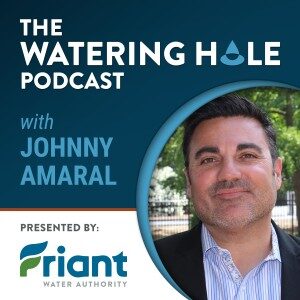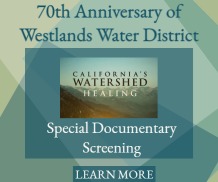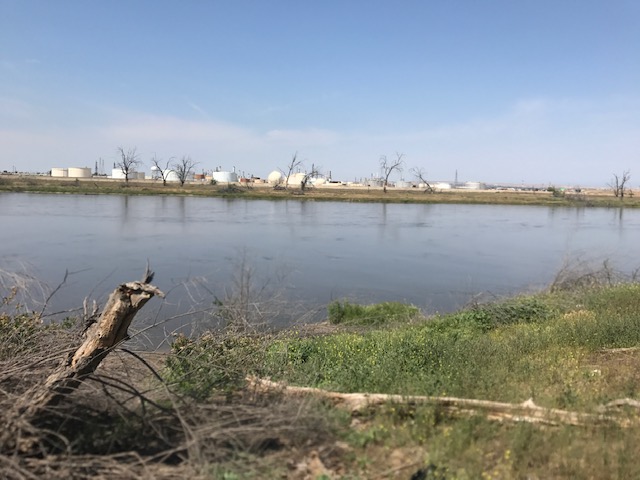The Kern Groundwater Authority Groundwater Sustainability Agency held its board of directors meeting on Wednesday, August 24, 2022 on Zoom. There are those however who show up in person and from the tiny Zoom window it looks like they are meeting in some law office conference room that could be located anywhere in the United States, but I’m confident they are somewhere in Bakersfield west of Highway 99.
The Meeting
Chairman Dan Waterhouse called the meeting at 8:00am on the dot. The board approved meeting online as some of the directors were participating in that manner. The board saluted the flag, God bless them. There was no public comment and the minutes were approved.
The financial report was given by North Kern Water Storage District’s Marinelle Duarosan. She said something about the audit, something about grants and the GSA is stable financially. The board approved.
AB 2201
Attorney Valarie Kincaid spoke about AB 2201. This is the bill that will place heavy regulatory burdens on GSAs, Counties and citizens just trying to get through the well permitting application process. Kincaid reported there were two small amendments. She reported the author, Assemblyman Steve Bennett of Ventura has been adamant about not changing the bill.
Ms. Kincaid is far to professional to say it, so I will. This is a bill no one wants or needs but for those opposed to agriculture in the San Joaquin Valley. Before the Governor’s Executive Order N 7-22 was penned, before AB 2201 was hatched, GSAs and counties had been coordinating on the well permitting process.
In a written interview Bennett was asked
- How many counties and GSAs are already coordinating well permits?
- What GSAs and county well permitting officials did you consult before writing the bill?
- Were GSA and county staffing considerations considered when writing this bill?
- How much of your district’s economic activity will be impacted by the passing of AB 2201 and to what degree?
- How much of the state’s ag economic activity will be impacted by the passing of AB 2201 and to what degree?
- SGMA was sold as including local control, does AB 2201 remove part of that local control?
Now for my most important question – what question should I ask you? (And what’s the answer? You’d be surprised how many people don’t answer.)
This is the polite, timely response I received:
“Dear Don,
I genuinely appreciate you taking the time to reach out to our office and understand AB 2201 and its intent. You have asked many good questions but I will not be able to address each one individually. However, I will say that California has a severe groundwater overdraft problem. This bill addresses one major weakness: the local agencies responsible for ending the overdraft do not have a voice in permitting new wells into the very basins they are supposed to end the overdraft activities in. This straightforward bill simply gives them that authority. Since the agencies are local, this keeps control at the local level.
I appreciate your technical questions but I simply don’t have time to respond to each one. Although, I really appreciate your final question, “what should I ask you?”
Question: What is a commonsense way to address this lack of connection between the oversight agency and the introduction of new wells? Answer: AB 2201
Stay well, Assemblymember Steve Bennett, District 37”
I appreciate when an elected official responds and I don’t take that lightly. I suspect Mr. Bennett loves his family and I have no doubt he’s worked hard to get where he’s at. But I feel shortchanged when the questions asked of the author of the bill about how much effort was put into avoiding unintended consequences when writing a piece of legislation that could negatively impact the lives of millions of people living in the San Joaquin Valley go unanswered. If Bennett doesn’t have time to answer these questions – who does?
Speaking of unintended consequences – Bennett most likely started out with the idea that strengthening well permit requirements is a good thing in as much as it will limit the number of wells thus limiting the amount of groundwater that can be pumped. I don’t know his thoughts obviously, but I’m trying to be generous. But his lack of collaborative interaction with the very people this bill will impact most reeks of – let’s call it Coastal Woke Elitism. A type of “we know better than you” attitude towards the San Joaquin Valley that often displays itself in Sacramento.
Spend a few minutes, go to: https://openstates.org/ca/bills/20212022/AB2201/ Scroll to the bottom of the page to the Related Documents section and click on the PDF for Senate Governance and Finance. This will take you to a page on the state’s California Legislative Information page. There will be a box labeled “Bill Analysis”. In this box is a link “06/27/22 – Senate Governance and Finance”. Click on it and it will download a PDF. This is an eight page document giving analysis of the bill. Pages seven and eight list those who support and those who oppose AB 2201.
(That’s a lot of steps to get to this list but figuring that out is why I get the small to medium bucks. Oh, I also discovered after I went through all that other, you can go directly to: https://leginfo.legislature.ca.gov/faces/billAnalysisClient.xhtml?bill_id=202120220AB2201&analysisId=352533&analyzingOffice=Senate+Governance+and+Finance# and find the support and oppose list.)
There are some familiar names in both categories. Ask yourself which of the groups depend on a healthy San Joaquin Valley with a vibrant economy and which earn their money from lawsuits and donations based on emotional appeals. Which one of these groups value the common sense, local control SGMA promised and which one wants government intervention?
AB 2201 takes away the local control of GSAs and counties working together on well permitting and imposes onerous reporting and baked in delays. But the scariest part of this is legislators may take it as a cue they can now come in and start recreating SGMA in their own image. As everyone knows it is very difficult to hit a moving target. Maybe the consequences aren’t unintentional after all. Bennett’s Sacramento Office number is: 916/319-2037. Give them a call and see if you can get some answers. Call the Gov too, I’m hearing rumbles he may be willing to veto AB 2201. You can try 916/445-2841.
The next item Kincaid brought up was Governor Gavin Newsom’s August 2022 19-page brochure titled, “California’s Water Supply Strategy – Adapting to a Hotter, Drier Future”.
The Gov’s strategy was described as interesting, short on specifics and the implementation portion is almost all targeted to increase regulation as opposed to storage. One possible interpretation of the strategy is the State Board will gather up as many water rights as it can and wrap them up in regulation so they can then redistribute supplies based on the State Board’s determination if the rights align with its perception of beneficial us – racial equity anyone? That is, if I heard correctly.
Kincaid said there is some funding suggested but the strategy looks like it could well be a set up for the state being to take over recharge in the Valley. This is a shift because as I understand it the State Board has no authority to manage aquifers, but that could be worked around by the State Board deciding where flood flows go. As the Valley well knows you can only fill aquifers by recharging surface water and if surface supplies are withheld . . .
There were statements in the strategy that could be encouraging to those less jaded from experiencing decades of state water bonds that provided many things besides developing more water supplies. Listed are intentions to: Create [build?] storage space for four million a/f. Recycle at least 800,000 a/f by 2030. Free up 500,000 a/f by more efficient use and conservation. There are also intentions to capture more storm water and desal both ocean and salty groundwater. The strategy then throws out some stats and charts that say the state could lose 10-percent of its water to increased evaporation and other climate change problems. The plan calls for studies.
Page eight is where the strategy begins addressing increased storage. It states local agencies have proposed 2.2 million more acre feet of underground storage but says it’s unclear if all of that is possible because the same water source maybe claimed by multiple parties and there may not be the infrastructure to move the water to where it is needed. But the strategy thinks we might be able to get 500,000 a/f in a good year. However, there is concern the local efforts could become – well, here’s what the document states, “Should local actions become too fragmented or inefficient* to maximize recharge opportunities, the state should consider a coordinated, state-level approach to provide for orderly, efficient disbursement of rights to high winter flows.” It also says State Board staff will prioritize groundwater recharge permits by October of this year and the strategy is expecting up to one million acres of farmland to be taken out of production. It doesn’t address any way to prevent this. It also doesn’t mention reducing any other vital industry’s production by withholding water. Just agriculture.
And at the end of page 10 we get a look at what this may look like, “DWR and the State Water Board will develop a mechanism to create a more consistent, economical, and equitable approach for allocation of water rights for groundwater recharge. The initial proposal would focus on the State securing all reasonably available future flood flows in the Central Valley, allowing the State to then allocate the available water in an orderly, holistic, equitable, and integrated approach. The process would:
- Level the playing field for local agencies, especially those that lack the resources to navigate the water right process.
- Set clear water availability metrics for every potential applicant, allowing for fair comparisons among applicants.
- Address equity concerns, including, for example, the need to protect domestic wells or abate subsidence.**
- Leverage other funding opportunities.
- Spur tight coordination between the State Water Board and DWR in the allocation of water rights.”
Wow, with a plan like that what could go wrong? Also, does anyone know if groundwater recharge has been officially moved into the beneficial use category? Maybe it has, but if not that might be a good thing to put in place to provide some legal cover.
Here’s a potentially funny side note: in a separate section on page 11 the strategy calls for the California Water Commission staff to continue monitoring development of the seven Proposition One projects closely. I don’t know all the staff at CWC but I know they work hard, take their duties seriously and I’ll bet you a dollar they are already doing that and won’t be letting up until they no longer have to deal with the billions of dollars they are currently sitting on. It occurs to me the strategy might have included some helpful language to speed things up in the disbursement of this money. CWC staff isn’t the reason the voters desire to build more water storage has been sitting in a bank somewhere since 2014. And to be fair it does call for formalizing, streamlining and continuing existing efforts to facilitate permitting. There’s something about establishing an interagency strike team to help.
There is a bright spot starting on the bottom of page 11 about increasing San Luis Reservoir storage by 135,000 a/f and restoring capacity lost to subsidence at major Central Valley Canals. Good for them. And there is a section about $100 million in the upcoming budget for local dam safety projects that could help regain the 350,000 a/f of storage lost to dams needing upgrades.
Oh no, the bright spot begins to dim considerably on page 13 where you run into section 4.3 Modernize water rights administration for equity, access, flexibility, and transparency. It begins with, “The foundation of how California manages water rights dates to the Gold Rush and has not evolved in step with changing public values and management needs.” It continues a little later, “These improvements are a necessary predicate to modernize our water rights system in a manner that respects water right priorities and aligns with current public values and needs.”
Join with me in being grateful our foundational documents include this phrase from the Declaration of Independence, “We hold these Truths to be self-evident, that all Men are created equal, that they are endowed by their Creator with certain unalienable Rights as long as they evolve to keep step with changing public values and management needs.”
Executive Director Report
Patty Poire Executive Director gave her report and said the KGA received a cool $7.2 million from Prop 68 grant funds. Poire explained that Provost & Pritchard Engineering has offered to help administer the grant for the modest sum of $100,000. That is well within the budget and the board agreed to enter into a contract with P&P.
Todd Groundwater is another engineering firm that is providing groundwater modeling for the KGA. This comes with certain confidentiality and disclaimer concerns. Kincaid explained the attorneys for the KGA member groups and the new South of Kern River GSA have spoken with each other. The South of Kern used to be KGA members when the modeling with Todd Groundwater was first agreed to. Apparently there needs to be a rewrite of the model’s disclaimer to adjust for this. The idea is to make sure everyone is comfortable staying with the Todd model and prevent several models covering the same patch of ground.
Steve Teglia, General Manager Kern Delta Water District, which is a member of the Kern River GSA said since this is a basin wide effort all the GSAs in the Kern Subbasin need to have a say so on the disclaimer. Poire said that would be a move amiable to the KGA. Kincaid pointed out the disclaimer goes with the data developed. If a GSA not in the KGA takes the data its up to them if they want to use the disclaimer as worded. Poire said she’s looking to the 2025 SGMA update and the need to keep the methodology uniform over the entire subbasin. You don’t want one GSA using metric and another using SASE or the King’s Measure.
Jeevan Muhar, General Manager of Arvin Edison WSD, which is a member of the SKRGSA said his district supports the CV2Sim model, but that model doesn’t represent Arvin Edison well, especially around the edges. He does support the CV2Sim model for basin wide and AE has developed its own tool for in-district use. But he assured the KGA AE has no plans to take internal data from that model and tossed into the mix for basin wide use. The board seemed reassured to hear that.
Well Permitting
Poire said Kern County planning department requests a written review of a proposed gas station along I-5 in west Kern County receiving water. The location is in a White Area. She proposed reviewing the project and educating the applicant on the harsh reality that as SGMA moves forward there could be some curtailments. Kincaid said the response must be very clear KGA is not a water supply provider. There is specific language being written to address well drilling as the Governor’s executive order N-7-22 requires GSAs to review well permits. Something AB 2201 wants to codify with steroids. Poire said this places anyone who needs a non-domestic well, ag or otherwise in a position of making tough business decisions based on a small amount of certainty.
Jon Parker from the Kern Water Bank asked if the response should include the applicant provide all the well and groundwater data to the KGA. That struck a sweet note with the board because that is a good idea if a GSA wants accurate data for the five year GSP adjustments. The board approved sending a letter to the applicant but wanted Parker’s point included.
Next North Kern WSD and Shafter Wasco ID requested a change in their monitoring well network. Monitoring wells have been a challenge on occasion. They had a well collapse. This will require notice of a change in the monitoring system.
Poire, Kincaid, Waterhouse and Jason Gianquinto, General Manager Semitropic WSD met with Paul Gosselin, DWR’s top dog for all things SGMA and talked about a data gap in the recently submitted GSP.
Workshops
Mike Maley from TODD Groundwater gave a presentation/workshop. He talked pretty fast and used a lot of jargon and initials. Phyllis Stanin also works at TODD and she has a beautiful southern drawl that doesn’t get in too big a hurry. Alas, she was not giving the presentation.
Maley, was thorough and said the grant application and planning of the Kern Basin Study is up and running. The first task was addressing data gaps. TODD took the CV2Sim model and began gathering data. As water budgets are developed and calibrated the data base will increase and give better support to the decision makers.
Maley listed eight tasks: data compilation, hydrologic evaluation, hydrogeological conceptual model, water budget methodology, model revisions, model recalibration – at that point Poire reminded Maley time was ticking and I don’t know what happened, but I never found out what the last two tasks were. He kicked it up a notch and before you know it he was finished.
Land IQ
Next Dr. Joel Kimmelshue of Land IQ was going to give his presentation about how remote sensing of Evapotranspiration by satellite works. He was at the meeting in-person. He said 15-years ago he and others started the company with a mix of ground based and satellite interpretation. He grew up farming and knows the need for ground truthing. They drive about 17,000 miles a year checking their weather recording stations for accuracy.
Land IQ can provide Et data for every square foot of land in the subbasin. He said Land IQ began with Semitropic WSD in 2018 and now provides this service for dozens of GSAs. He said ground truthing is key, the data has to be calibrated. The parameters needed to measure actual Et are well defined and recorded. DWR has approved Land IQ’s methods as they have worked together in the Delta. There are also independent checks to validate their results made by experts in the field who do not work for Land IQ. Kimmelshue said accuracy is very important as it will determine the amount of water a landowner is using.
Each month Land IQ delivers a field by field crop mapping data, not just a summertime snapshot, to DWR. Precipitation is measured at ground station and of course folks want to know to the drop how much rain is falling on their area. Permanent crop age is also determined. That started with the almond board wanting to gage the water consumption as trees mature. All of this information is available on the web and cells phones and such for the right participants.
It was a very different type of Power Point presentation because they couldn’t get Kimmelshue’s slide show to appear on the Zoom screen. But you could hear him and he didn’t talk fast. Poire said she’ll send the presentation to us on-liners by email. What a fine, considerate lady.
Things ended about 9:48am. And then someone hit a power pole in front of my house and shut me down for the rest of the day. That is why this report is posted later than usual. That’s also why the off the subject critiques of AB 2201 and the Gov’s water strategy ran a little longer. I’d already missed the deadline, might as well vent. If you’ve made it this far thanks for applying your lectiophile tendencies towards my writing. Go be good to yourself and each other.
DISCLAIMER OF RESPONSIBILITY; Waterwrights strives to provide its clients with the most complete, up-to-date, and accurate information available. Nevertheless, Waterwrights does not serve as a guarantor of the accuracy or completeness of the information provided, and specifically disclaims any and all responsibility for information that is not accurate, up-to-date, or complete. Waterwrights’ clients therefore rely on the accuracy, completeness and timeliness of information from Waterwrights entirely at their own risk. The opinions expressed in this report are those of the author and do not represent any advertisers or third parties.
*Is it just me or does the irony of elected officials in California pointing out the inefficiency of trying to follow state guidelines raise any flags?
**Would it be racists to point out if someone’s domestic well went bad due to it being a poorly constructed well and not because of racism?
ALL RIGHTS RESERVED. Copyright 2022 by Waterwrights.net.
SGMA The Sustainable Groundwater Management Act of 2014 calls for the formation of Groundwater Sustainability Areas within Basins and Sub-basins to develop Groundwater Sustainability Plans.
Staff: Patty Poire – Executive Director, Valerie Kincaid – Attorney, Marinelle Duarosan – Treasurer
The Kern Groundwater Authority membership:
Chairman: Dan Waterhouse.
Cawelo Water District, City of Shafter, Kern County Water Agency, Kern-Tulare Water District, Kern Water Bank Authority, North Kern Water Storage District, Olcese Water District, Rosedale-Rio Bravo Water Storage District, Semitropic Water Storage District, Shafter-Wasco Irrigation District, Southern San Joaquin Municipal Utility District, Tejon-Castaic Water District, West Kern Water District & Westside District Water Authority
DWR Listing: Basin San Joaquin, Sub Basin Kern 5-022.14
































